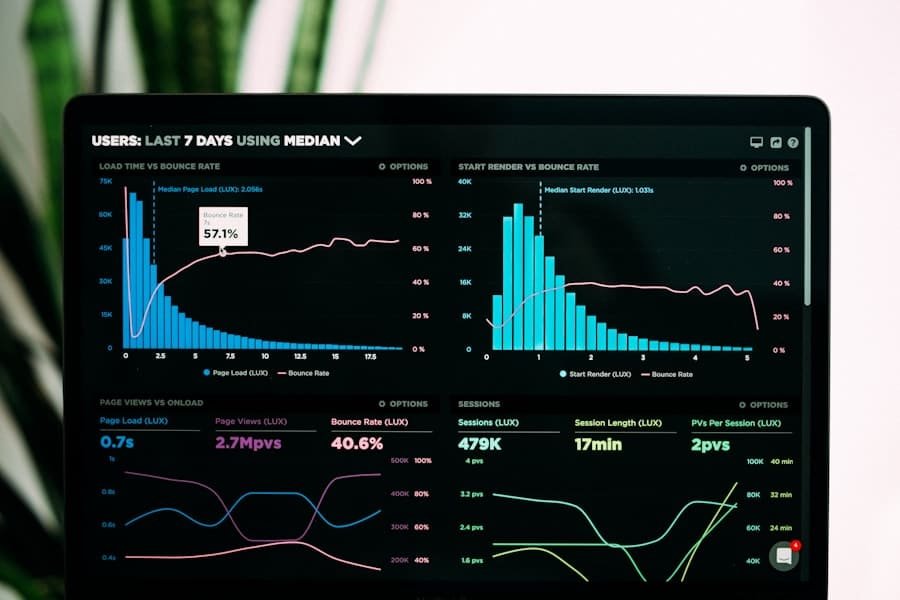Gross Domestic Product (GDP) is a key indicator of a country’s economic health and measures the total value of all goods and services produced within its borders. GDP growth occurs when there is an increase in the production of goods and services, leading to a rise in the overall economic output. This growth is often driven by factors such as increased consumer spending, business investment, government expenditure, and net exports.
On the other hand, GDP decline occurs when there is a decrease in the production of goods and services, leading to a decrease in the overall economic output. This decline can be caused by factors such as reduced consumer spending, decreased business investment, government austerity measures, and negative net exports. GDP growth is essential for a healthy economy as it indicates increased economic activity, higher employment levels, and rising incomes.
It also reflects the overall standard of living and the ability of a country to invest in infrastructure, education, and healthcare. Conversely, GDP decline can lead to economic recession, high unemployment rates, and reduced consumer confidence. It can also result in decreased government revenue, making it challenging to fund essential public services.
Understanding the factors that contribute to GDP growth and decline is crucial for policymakers and economists to develop strategies to sustain economic growth and mitigate the impact of economic downturns.
Key Takeaways
- GDP growth indicates the increase in a country’s economic output, while GDP decline indicates a decrease in economic output.
- Key indicators of economic recession include declining GDP, rising unemployment, and reduced consumer spending.
- Key indicators of economic expansion include increasing GDP, decreasing unemployment, and rising consumer spending.
- GDP growth can lead to increased employment and potential inflation due to higher demand for goods and services.
- GDP decline can lead to higher unemployment and potential deflation due to decreased demand for goods and services.
Key Indicators of Economic Recession
Decline in Economic Activity
One of the most significant indicators of an impending economic recession is a decline in GDP growth over two consecutive quarters, indicating a contraction in economic activity. This decline can be a clear signal that the economy is slowing down and may be heading towards a recession.
Rising Unemployment and Reduced Consumer Spending
Rising unemployment rates are another crucial indicator of a recession, as businesses may start laying off workers due to reduced demand for goods and services. Additionally, a decrease in consumer spending can signal a recession, as people become more cautious with their money and cut back on discretionary purchases.
Decline in Business Investment and Industrial Production
Business investment also tends to decline during a recession as companies become more conservative with their capital expenditures. Furthermore, a decrease in industrial production, a slowdown in housing market activity, and a decline in consumer confidence are all indicators of an economic recession.
The Consequences of a Recession and the Importance of Early Recognition
These factors can contribute to a downward spiral in the economy, leading to reduced business profits, lower tax revenues for the government, and increased financial stress for households. Recognizing these key indicators early on can help policymakers and businesses take proactive measures to mitigate the impact of a recession and work towards economic recovery.
Key Indicators of Economic Expansion

Conversely, several key indicators can signal an economic expansion or recovery. One of the most significant indicators is an increase in GDP growth, indicating a rise in economic activity and overall output. This growth is often driven by factors such as increased consumer spending, business investment, government stimulus measures, and positive net exports.
Another crucial indicator of economic expansion is a decrease in unemployment rates as businesses start hiring more workers to meet growing demand for goods and services. Additionally, an increase in consumer spending can signal an economic expansion as people become more confident in their financial situation and are willing to spend on discretionary purchases. Business investment also tends to increase during an economic expansion as companies seek to capitalize on growing opportunities and expand their operations.
Other indicators of an economic expansion include a rise in industrial production, increased housing market activity, and a boost in consumer confidence. These factors contribute to a positive cycle in the economy, leading to higher business profits, increased tax revenues for the government, and improved financial well-being for households. Recognizing these key indicators early on can help policymakers and businesses capitalize on the opportunities presented by an economic expansion and sustain long-term growth.
Impact of GDP Growth on Employment and Inflation
GDP growth has a significant impact on employment and inflation within an economy. When GDP is growing, it often leads to increased job creation as businesses expand their operations to meet rising demand for goods and services. This expansion can result in lower unemployment rates as more people find employment opportunities.
Additionally, higher levels of economic activity can lead to increased consumer spending, further driving demand for goods and services and creating a positive cycle of job creation. On the other hand, GDP growth can also lead to inflationary pressures as increased demand for goods and services can outstrip supply, leading to rising prices. This inflation can erode the purchasing power of consumers and reduce the affordability of essential goods and services.
Policymakers often use monetary policy tools such as interest rate adjustments to manage inflationary pressures during periods of high GDP growth.
Impact of GDP Decline on Unemployment and Inflation
Conversely, when GDP declines, it often leads to higher unemployment rates as businesses reduce their workforce due to decreased demand for goods and services. This reduction in employment opportunities can lead to financial stress for households and reduced consumer spending, further exacerbating the economic downturn. Additionally, decreased economic activity can lead to deflationary pressures as businesses reduce prices to stimulate demand, leading to a decrease in overall price levels.
High levels of unemployment can have long-term negative effects on the economy, leading to reduced consumer confidence, lower tax revenues for the government, and increased reliance on social welfare programs. Policymakers often use fiscal stimulus measures such as increased government spending or tax cuts to mitigate the impact of GDP decline and stimulate economic activity.
Government Policies to Address GDP Decline

Fiscal Stimulus Measures
One common approach is to implement fiscal stimulus measures, such as increasing government spending on infrastructure projects, healthcare, education, and social welfare programs. This increased spending can create jobs, boost consumer confidence, and stimulate overall economic activity.
Monetary Stimulus Measures
Another policy option is to implement monetary stimulus measures, such as interest rate cuts by central banks to encourage borrowing and investment by businesses and consumers. Lower interest rates can make it more affordable for businesses to invest in new projects and for consumers to make large purchases, such as homes or cars.
Targeted Industry Support
Additionally, governments may implement targeted industry support programs or tax incentives to encourage business investment and innovation. These policies can help specific sectors that have been particularly hard hit by the economic downturn and support their recovery.
Strategies for Sustaining GDP Growth
To sustain GDP growth over the long term, governments and businesses can implement various strategies aimed at fostering innovation, increasing productivity, and promoting sustainable economic development. One key strategy is investing in education and workforce development to ensure that the labor force has the skills needed for emerging industries and technologies. Another strategy is investing in infrastructure projects such as transportation networks, energy systems, and digital connectivity to support business operations and facilitate economic growth.
These investments can create jobs in the short term and provide long-term benefits for businesses and communities. Furthermore, promoting research and development activities through public-private partnerships can drive innovation and create new opportunities for businesses to expand into new markets and industries. Sustainable development practices such as investing in renewable energy sources, reducing carbon emissions, and promoting environmentally friendly technologies can also contribute to long-term economic growth while mitigating the impact of climate change.
In conclusion, understanding the factors that contribute to GDP growth and decline is crucial for policymakers and businesses to develop strategies aimed at sustaining economic growth and mitigating the impact of economic downturns. By recognizing key indicators of economic recession or expansion early on, governments can implement targeted policies to address GDP decline or stimulate growth. Additionally, implementing long-term strategies aimed at fostering innovation, increasing productivity, and promoting sustainable development can contribute to sustained GDP growth over time.
For more in-depth analysis on the impact of GDP growth and decline on the economy, check out the article “Understanding the Business Cycle: Recession and Expansion” on The Econosphere’s blog. This article delves into the key indicators of recession and expansion, providing valuable insights into how GDP fluctuations can affect the overall economic landscape. https://theeconosphere.com/
FAQs
What is GDP growth?
GDP growth refers to the increase in the total value of goods and services produced within a country’s borders over a specific period of time. It is a key indicator of economic health and is often used to measure a country’s economic performance.
What is GDP decline?
GDP decline, on the other hand, refers to the decrease in the total value of goods and services produced within a country’s borders over a specific period of time. It indicates a contraction in the economy and is often a sign of economic recession.
What are the key indicators of recession?
Key indicators of recession include a decline in GDP, rising unemployment rates, decreased consumer spending, and a slowdown in business investment. These factors can contribute to a contraction in the economy and lead to a recession.
What are the key indicators of economic expansion?
Key indicators of economic expansion include GDP growth, low unemployment rates, increased consumer spending, and rising business investment. These factors contribute to a growing economy and can lead to periods of economic prosperity.
How does GDP growth or decline impact the overall economy?
GDP growth or decline has a significant impact on the overall economy. When GDP is growing, it indicates a healthy and expanding economy, leading to increased employment opportunities, higher incomes, and improved living standards. Conversely, a decline in GDP can lead to job losses, reduced incomes, and a decrease in overall economic activity.
What role does government policy play in managing GDP growth and decline?
Government policies, such as fiscal and monetary measures, play a crucial role in managing GDP growth and decline. For example, during a recession, governments may implement stimulus packages to boost economic activity, while during periods of expansion, they may implement measures to prevent overheating and inflation.








